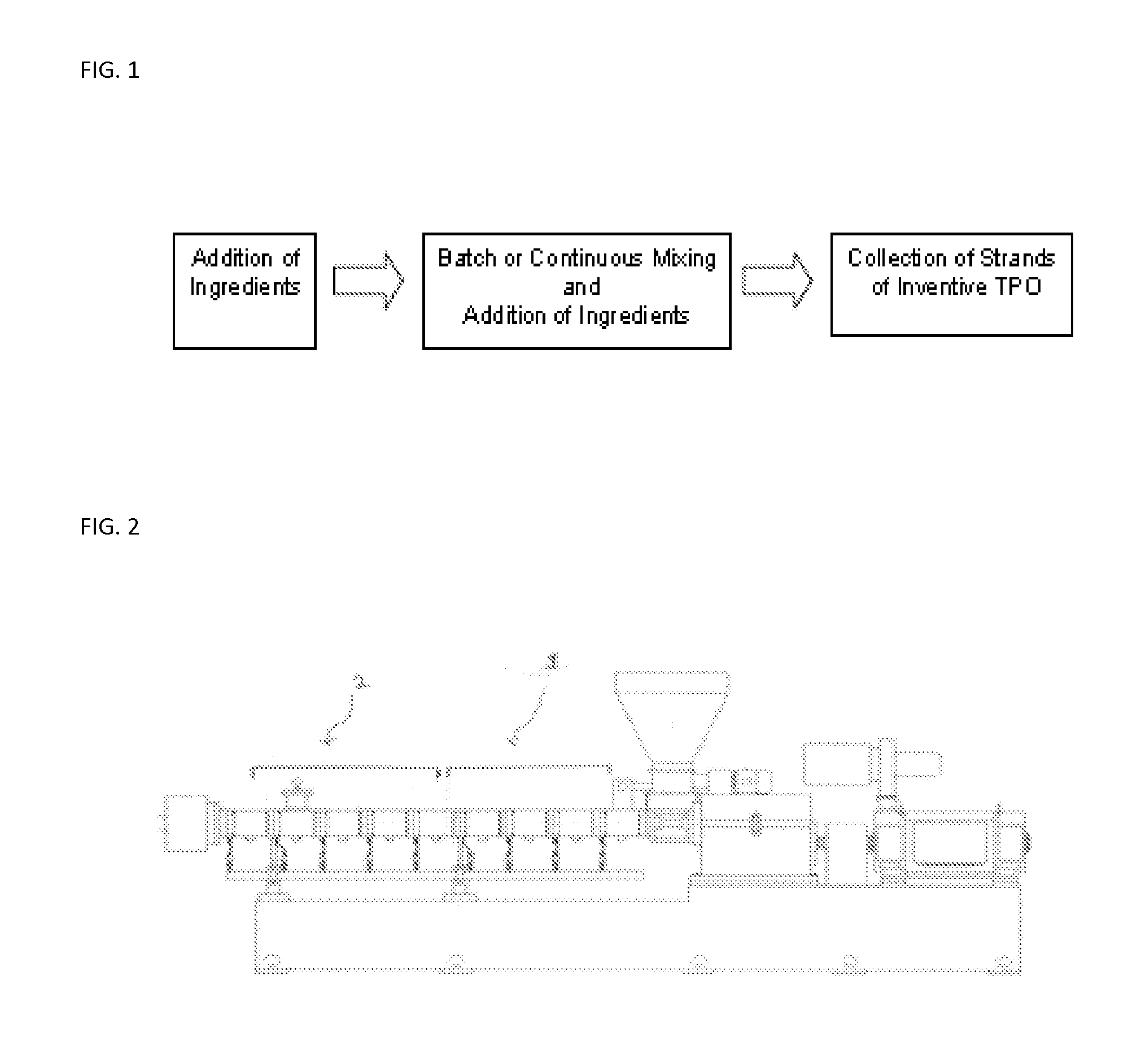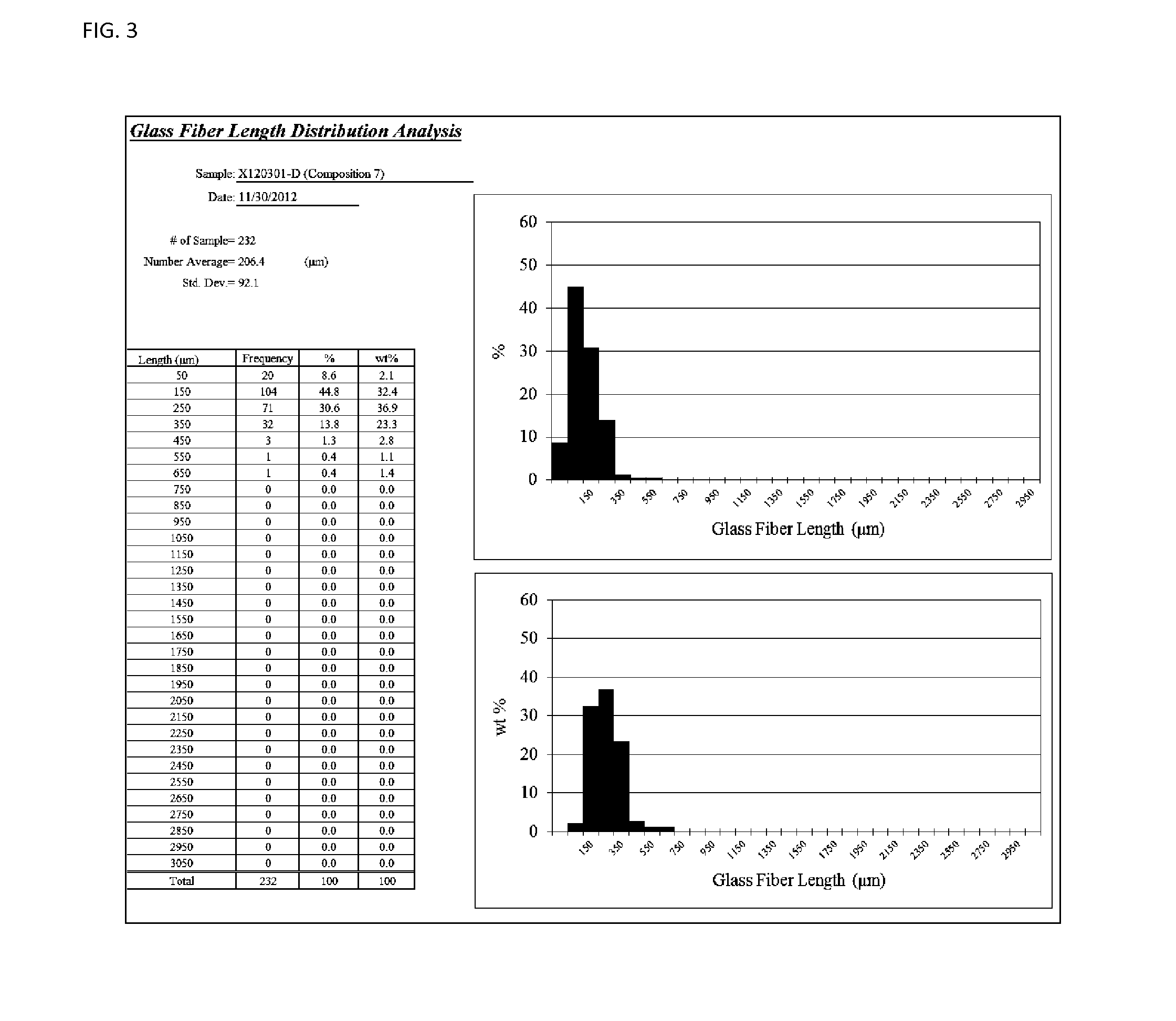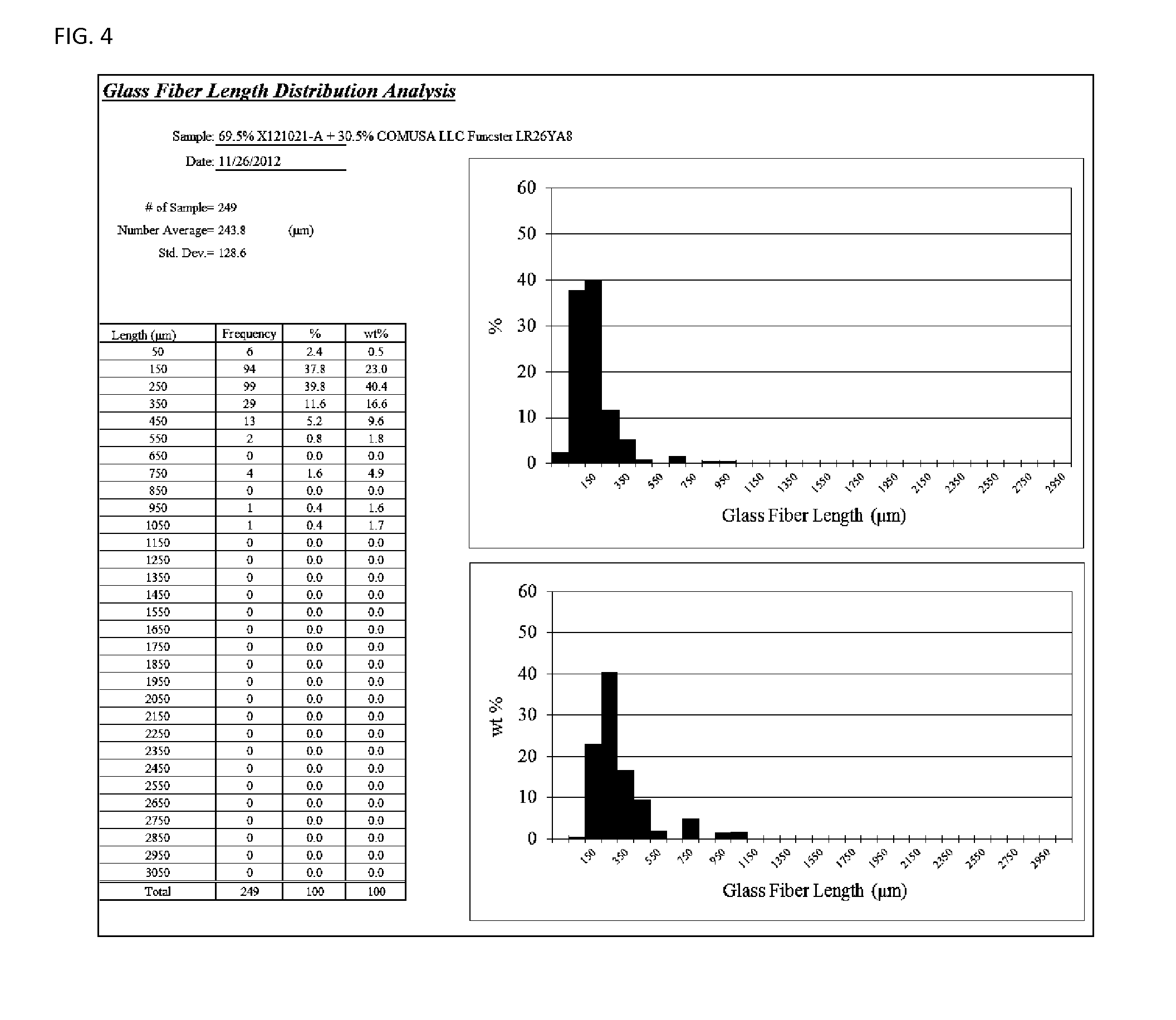Polypropylene compounds with enhanced haptics and methods of making same
a technology of haptics and polypropylene, which is applied in the direction of film/foil adhesives, mixing, transportation and packaging, etc., can solve the problems of reduced softness to the touch, increased tooling costs, and more complex manufacturing procedures, and achieve enhanced haptics and processes. , the effect of enhancing the haptics
- Summary
- Abstract
- Description
- Claims
- Application Information
AI Technical Summary
Benefits of technology
Problems solved by technology
Method used
Image
Examples
examples
[0031]The following examples illustrate the present invention. It is understood that these examples are given for the purpose of illustration and do not limit the invention. In the examples, all parts and percentages are by weight based on the total weight of the composition unless otherwise specified. In case of Multiaxial Impact test also sometimes referred to as Instrumented Dart Impact, the failure mode of plaques is noted in parentheses. (D) denotes ductile failure mode and (B) denotes brittle failure mode. In case a set of samples exhibited a mixture of ductile and brittle failure mode then the respective number of samples for each failure mode is noted in parentheses.
[0032]The APNA test method to rank softness is as follows:
[0033]1) Right hand needs to be dry and free of any oil residue prior to testing.
[0034]2) Rub index finger on molded plaque for a length of −5 centimeters.
[0035]3) Repeat three times and assign rating of excellent, acceptable or unacceptable.
[0036]Composit...
PUM
| Property | Measurement | Unit |
|---|---|---|
| length | aaaaa | aaaaa |
| die temperature | aaaaa | aaaaa |
| diameter | aaaaa | aaaaa |
Abstract
Description
Claims
Application Information
 Login to View More
Login to View More - R&D
- Intellectual Property
- Life Sciences
- Materials
- Tech Scout
- Unparalleled Data Quality
- Higher Quality Content
- 60% Fewer Hallucinations
Browse by: Latest US Patents, China's latest patents, Technical Efficacy Thesaurus, Application Domain, Technology Topic, Popular Technical Reports.
© 2025 PatSnap. All rights reserved.Legal|Privacy policy|Modern Slavery Act Transparency Statement|Sitemap|About US| Contact US: help@patsnap.com



